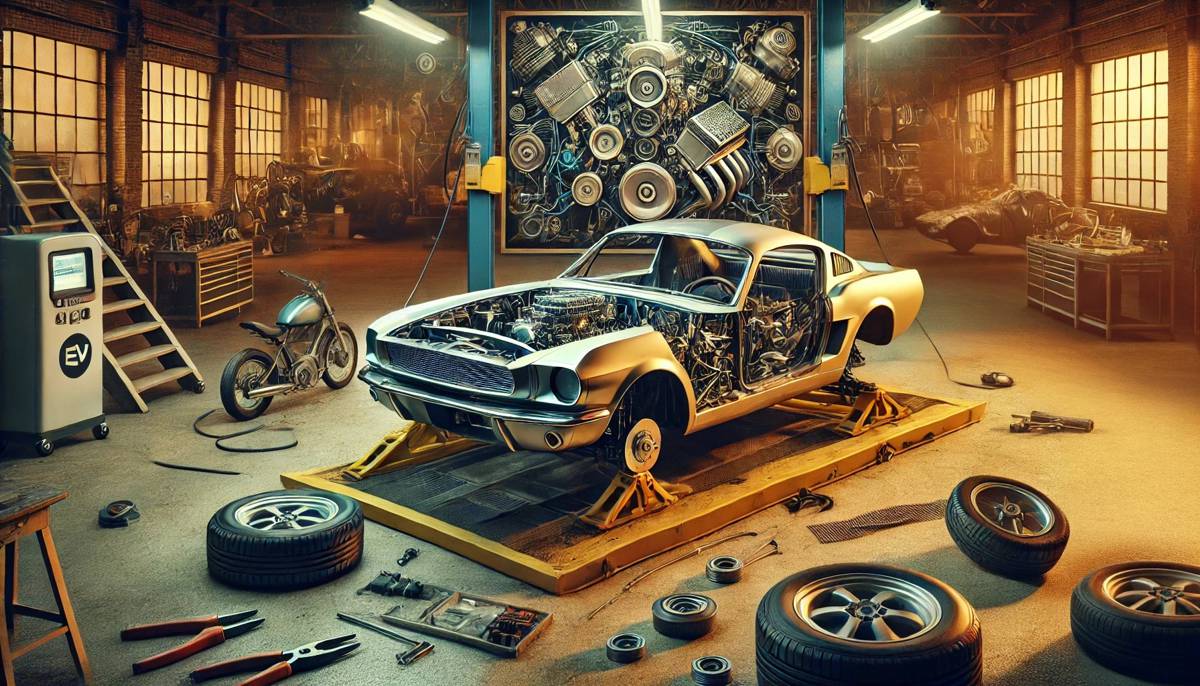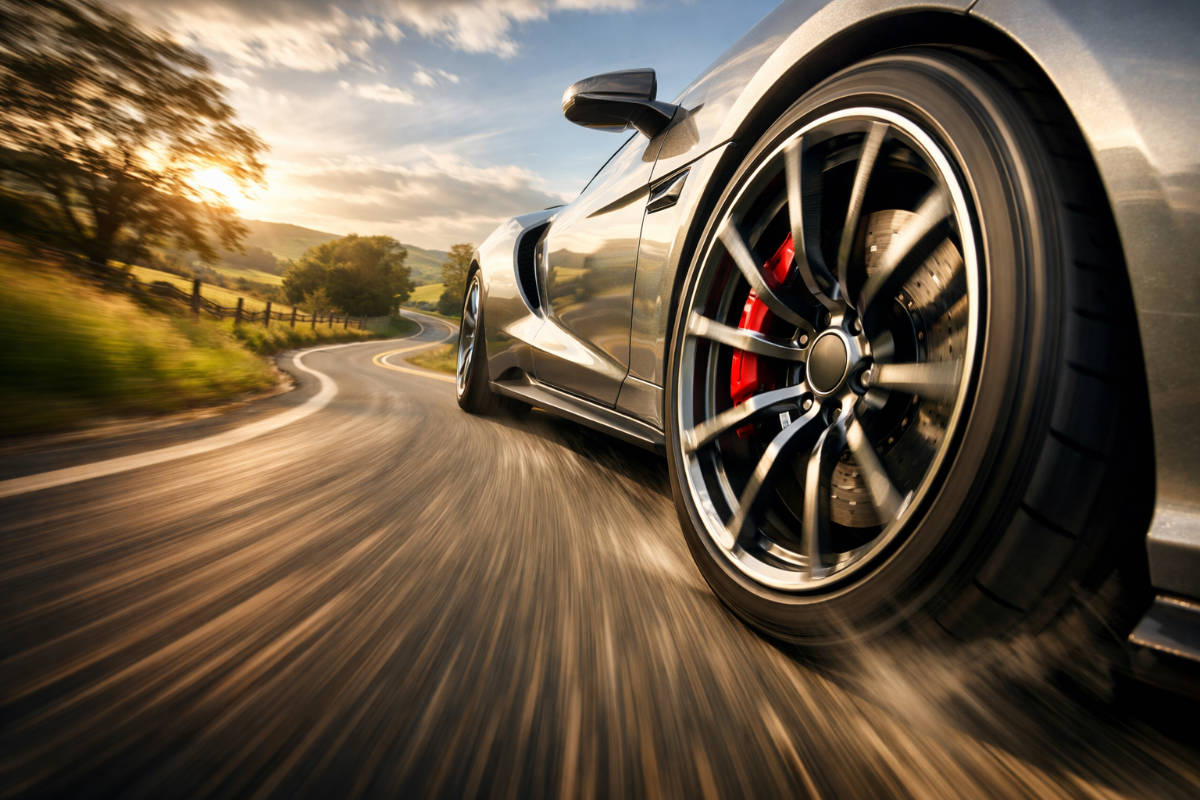How Vehicle Technology is Changing Classic Car Restoration
Classic car restoration is a passion fuelled by nostalgia, craftsmanship, and a deep connection to automotive history. Every curve, every bolt, every roar of the engine takes us back to a time when cars were built with soul.
But preserving these pieces of history isn’t easy. Finding the right parts can feel like a never-ending treasure hunt. And keeping a vintage machine running smoothly requires patience and dedication. Yet, with every challenge comes an opportunity to bring the past back to life in ways we never imagined.
Today, technology is transforming the world of classic car restoration. New advancements are making it easier to overcome challenges that once seemed insurmountable. Restorers can now bring old cars back to life with greater accuracy and efficiency, ensuring that these timeless machines remain roadworthy for years to come.
Modern Diagnostic Tools for Classic Engines
Restoring classic engines once required a hands-on approach, with mechanics relying on experience and trial and error. Today, modern diagnostic tools have transformed that process, offering immediate and precise data on an engine’s performance. This technology identifies problems quickly, saving time and preserving the integrity of the vehicle.
With advanced diagnostics, you no longer need to take apart an entire engine to locate a fault. These tools establish a direct connection and provide real-time analysis, pinpointing engine problems with minimal disruption. This precision ensures that any repairs or adjustments are targeted and efficient.
Regardless if you’re doing a DIY project or working with the pros to service your Volkswagen, diagnostic tools allow for a smoother, more accurate restoration. By integrating modern technology into the process, you can maintain the engine’s authenticity while enhancing its reliability on the road.
3D Printing for Hard-to-Find Parts
Restoring a classic car used to mean endless searches for parts that no longer existed. Many projects stalled simply because vital components were impossible to find. But now, things have changed.
With 3D printing for hard-to-find parts, restorers can recreate even the rarest components with incredible precision. Instead of relying on luck or expensive auctions, they can design and print the exact piece they need, from intricate engine parts to delicate trims. This technology bridges the gap between old and new, allowing classic cars to be fully restored without compromise.
This isn’t just about convenience. 3D printing preserves the authenticity of vintage vehicles by offering an alternative to replacing original parts with modern substitutes. Now, even the most elusive pieces can be replicated to match the original specifications, keeping the car’s history intact while ensuring it runs smoothly.
Improved Materials for Enhanced Restoration
When it comes to restoring classic cars, materials matter. In the past, restorers often struggled to find original or durable materials to match the authenticity of a vehicle. Today, modern technology has introduced a variety of improved materials that enhance the restoration process without compromising the car’s original look.
New synthetic fabrics, corrosion-resistant metals, and eco-friendly paints are now available, offering greater durability and precision. These advancements allow for better restoration of interiors, exteriors, and even mechanical components. Cars can now be restored to last longer, with materials that withstand wear and tear more effectively than those from decades ago.
Using these improved materials means that classic car restorers no longer have to choose between authenticity and quality. These innovations ensure the preservation of the car’s historical value while making it more reliable and roadworthy for today’s driving conditions.
Integrating Modern Safety Features into Classic Cars
Restoring a classic car is about more than just aesthetics—it’s also about ensuring the car is safe to drive. Modern safety technology has made it possible to upgrade vintage vehicles without sacrificing their iconic designs. Restorers now have access to features like anti-lock brakes, improved seatbelts, and airbag systems, all of which can be seamlessly integrated into classic cars.
These safety enhancements not only make driving more secure but also allow owners to enjoy their vehicles on the road with confidence. The key is installing these features in a way that preserves the original charm of the car while ensuring it meets today’s safety standards.
By carefully incorporating modern safety elements, restorers can give classic cars the best of both worlds—timeless design with the reliability of modern engineering. This allows vintage vehicles to be more than just showpieces—they can become daily drivers that offer both style and safety.
The Role of Electric Conversion in Classic Car Restoration
While some enthusiasts may hesitate at the thought of replacing a traditional engine, electric conversions offer a new way to preserve and enhance classic vehicles. By swapping out the gas engine for an electric motor, restorers can improve performance, reduce environmental impact, and extend the life of the car.
Electric conversions allow classic cars to maintain their timeless appearance while benefiting from the reliability and efficiency of modern technology. These conversions also eliminate common issues with aging engines, such as fuel system failures or exhaust emissions, making the vehicle more practical for daily use.
What’s more, electric conversion opens up new possibilities for sustainability in the restoration world. It’s a way to preserve the past while embracing the future, ensuring that classic cars continue to thrive in an era of cleaner, more efficient technology.
Future of Classic Car Restoration with AI and Automation
As technology continues to evolve, artificial intelligence in manufacturing is starting to make its mark on classic car restoration. AI can assist in everything from identifying rare parts to predicting maintenance needs, streamlining the restoration process in ways that were once unimaginable. Automation is also playing a role, especially in precision tasks that require extreme accuracy, such as bodywork and paint application.
AI-driven tools can analyse the condition of a vehicle and recommend the most efficient restoration path, reducing time and labour. These tools can even simulate potential modifications, helping restorers visualize outcomes before making changes. It’s an incredible advancement that takes much of the guesswork out of the process.
As AI and automation become more integrated into restoration work, the future looks bright for classic car enthusiasts. With these tools, restorers can achieve a perfect balance between preserving a vehicle’s history and ensuring it’s ready for modern roads.
Wrapping Up
Classic car restoration is no longer limited by time or outdated methods. With the rise of modern technology, enthusiasts now have the tools to not only preserve history but also elevate it. Whether it’s through 3D printing, electric conversions, or advanced diagnostics, the future of restoration is brighter than ever.
These innovations ensure that vintage cars continue to thrive, blending tradition with the limitless possibilities of the modern world.




















